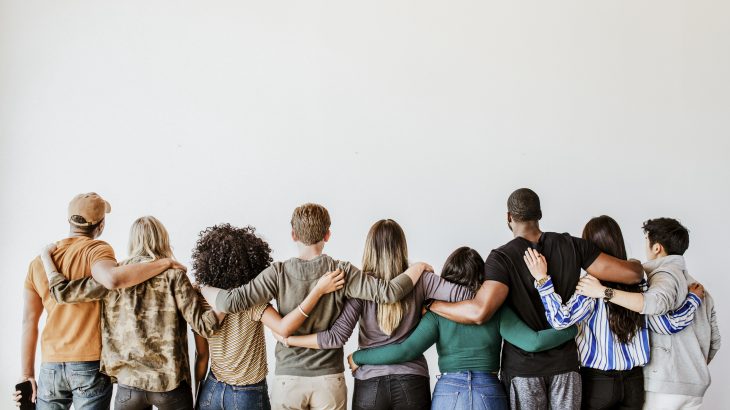We all know the benefits of a diverse team. It brings skillsets that promote effective collaboration and cooperation. Seeking diversity isn’t the final destination however — it’s the first step towards an inclusive environment.
To seek advice on how to not only create a diverse space but maintain an inclusive workplace, we invited two experts to a panel as part of our Workshops program: Victoria Cabal, the director of the Office for Student Inclusion at the University of Utah’s David Eccles School of Business, and Allia DeAngelis, the enterprise business agility lead at Accenture SolutionsIQ. Here are six takeaways we learned that will help you bring new voices into your room and ensure they are heard:
1. Don’t Confuse Diversity & Inclusion
Easily confused, the concepts of diversity and inclusion are often mistaken as being the same thing. DeAngelis started the conversation by making the distinction that “being inclusive is different than inclusion” and noted how “included people can have excluded ideas.” Within a community, diversity is the “who” – the people within the room and their unique perspectives. Equity and inclusion are both the “what” that dictate how those people interact in the space. We cannot assume that diversity and inclusion go together naturally, as it takes work to ensure they are both present. “Successful business people are successful in combining diversity and inclusion,” DeAngelis said.
2. Understand We All have Bias
DeAngelis questioned us saying, “Do you have a brain? Then you have bias.” Every person has their own unique perspective on life that stems from their experiences and identities. This creates bias, as no two people will look at one problem in the same way. Cabal emphasized the importance of recognizing our bias by observing our judgments. She advised that we normalize this recognition, inviting us to “notice what you say in your mind about your own bias and your bias towards others’ bias.”
DeAngelis agreed and added to this noting, “Naturally our neurology wants affinity.” It is within our biology as humans to want to surround ourselves with like-minded people. This makes it easy for one demographic of people to dominate the space through a shared bias, often unintentionally. Bias can still exist within diverse environments and hinders inclusivity if it isn’t kept in check.
3. Know Nothing Changes if Nothing Changes
Creating new solutions to old problems requires new perspectives. To solve company problems, you need different voices for different solutions. Inviting new voices to the table may require stepping outside of your team and outsourcing information. “I like to question the things other people don’t like to find out what they do,” DeAngelis said. Communicating what you agree and disagree with on your team will help you define your values and clarify your direction moving forward. Opening your mindset to outside ideas will broaden your perspective and create availability for necessary change.
4. Get Comfortable with Discomfort
Recognizing your bias and letting go of expectations can be hard. Objectivity is often prevented by feelings of embarrassment — everyone is afraid of messing up. “We have to give ourselves room to screw up and have the humility to own it when it happens,” Cabal said. Slowing down the natural responses of defensiveness is imperative to opening yourself to growth.
Accountability is important within a team, and trust is necessary for people to feel comfortable bringing issues to your attention, Cabal said. Intentional time spent getting to know each other will help ease some of the discomfort around these topics. Developing genuine relationships fosters a sense of community that will smooth difficult conversations. Cabal encouraged us to check-in on our co-workers regularly as “exclusion prevents the vulnerability necessary to facilitate communication.”
5. Make Space for Others
Ensuring everyone feels represented within a group requires perceptiveness towards the feelings of others. DeAngelis expressed the importance of being “actively involved, even when it’s with people you don’t get along with.” Noticing not only what is being said, but who isn’t speaking will help you decipher when to act as a leader and when to follow. Listening to the language ques of others will assist you in creating opportunities for people to share their ideas.
Creating a container and parameters for the space will encourage people to be comfortably vulnerable. DeAngelis suggested asking open questions and reading anonymously written suggestions from team members aloud. “Team alliances made in advance flatten the privilege dynamic and encourages radical vulnerability,” Cabal said. Both speakers suggested we make rules around the kinds of feedback you want to give each other and how you want to deliver this feedback. Establishing how you want to communicate will change the power dynamic in a way that promotes equity within your workplace.
6. Practice Self-Awareness
Being a citizen of your community requires your full presence within the space. “Practicing mindfulness takes practice,” DeAngelis said. She encouraged us to “drop into the moment” and allow ourselves to objectively notice how we were feeling. This sort of self-awareness lends itself to embodied leadership. Acknowledging our own abilities helps us to use them regularly and strengthen them. DeAngelis likened inclusivity to a muscle telling us, “You have to flex it regularly.”
Mindfulness is a practice that you can begin by deciding what you are going to notice in your surroundings. This perceptiveness helps us to process information and make decisions in our communities. Cabal expressed this in relation to exclusion when she said, “It’s not that it doesn’t happen, it’s that you recognize when it does happen.” When things don’t go well, breathe deeply, DeAngelis recommended. Remind yourself that tomorrow is a new day and then decide what you will do differently next time.
Diversity isn’t something that can be achieved, it requires constant pursuit. Cabal acknowledged the difficulty of inclusion within our current society but ended by revealing her motivation for continuing with her work: “It may not be that I ever see the change, but I can make the change without seeing it.”



